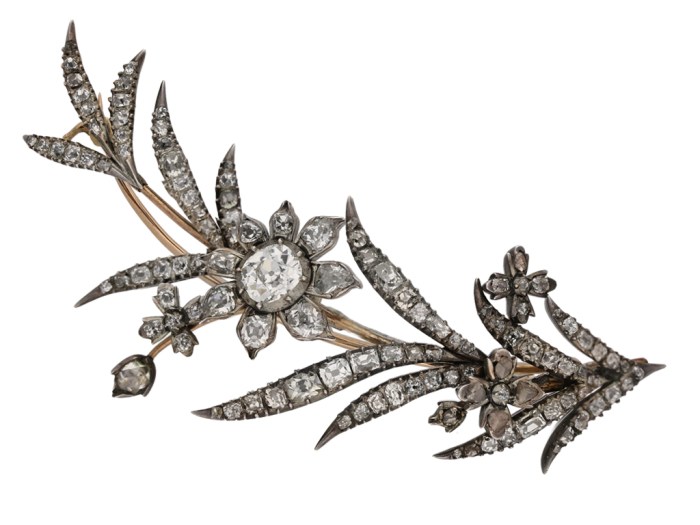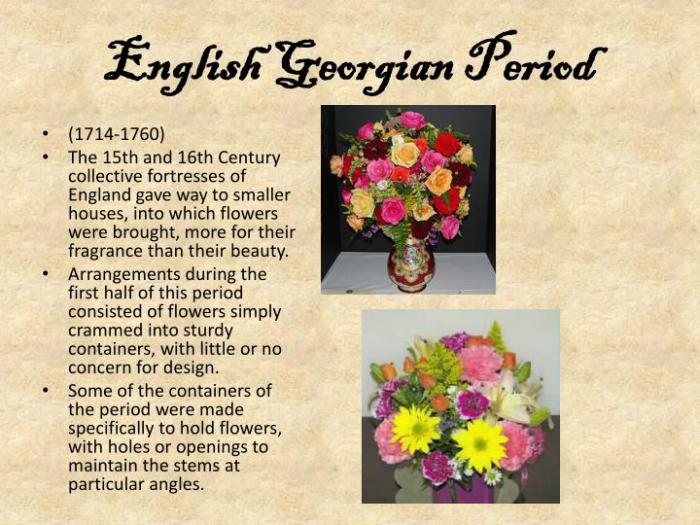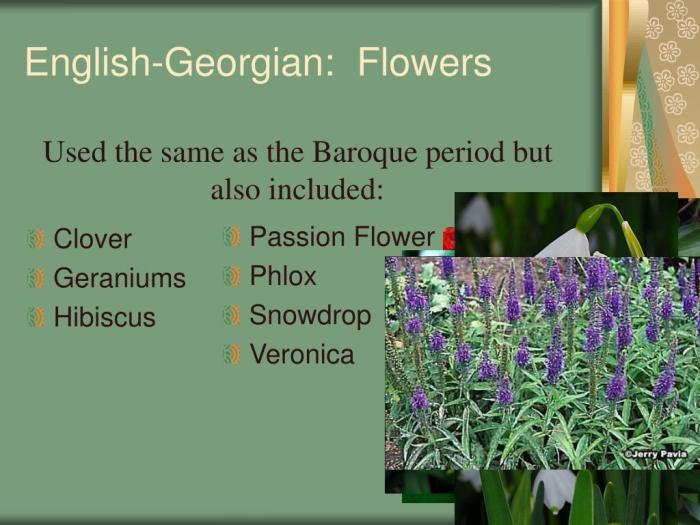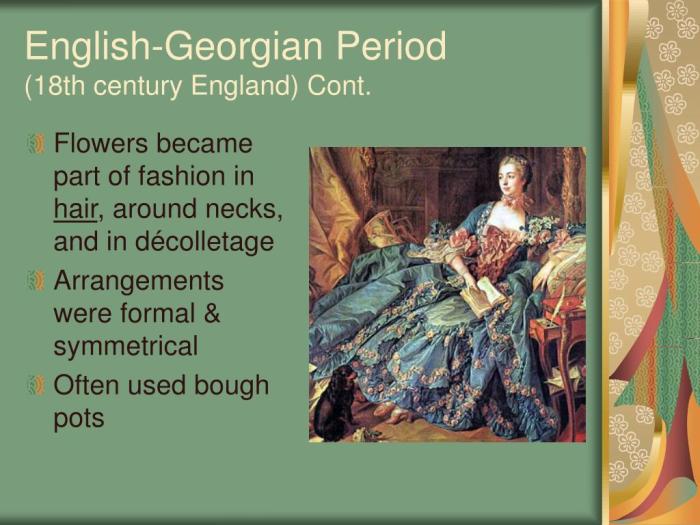English Georgian period floral design, a captivating style that emerged during the 18th century, continues to enchant with its intricate motifs, vibrant colors, and enduring charm. This distinctive design aesthetic, characterized by its natural inspiration and refined execution, has left an indelible mark on the world of art and design.
Influenced by the Georgian era’s emphasis on symmetry and balance, English Georgian period floral designs are often characterized by their elegant arrangements and harmonious color schemes. The use of natural motifs, such as flowers, leaves, and vines, adds a touch of organic beauty to these designs, while the incorporation of geometric elements provides structure and order.
Design Elements

English Georgian period floral designs are characterized by their use of natural motifs and patterns, such as flowers, leaves, and fruits. Popular flowers included roses, peonies, tulips, and lilies, while leaves often depicted ivy, acanthus, and oak. These elements were arranged in a variety of ways, from symmetrical to asymmetrical, to create a sense of balance and harmony.
Color Palette
The color palette of English Georgian period floral designs was typically derived from natural sources, such as flowers, plants, and minerals. Common colors included shades of green, blue, yellow, and pink. These colors were often used in combination to create a sense of depth and richness.
For example, a design might feature a bouquet of flowers in shades of pink, yellow, and green, with the background painted in a deep blue.
Materials and Techniques

English Georgian period floral designs were created using a variety of materials and techniques. Textiles, such as silk and cotton, were often used for curtains, upholstery, and clothing. Ceramics, such as porcelain and earthenware, were used for tableware and decorative objects.
Wallpaper was also a popular medium for floral designs.
The techniques used to create these designs included embroidery, painting, and printing. Embroidery was often used to create intricate floral motifs on textiles, while painting was used to decorate ceramics and wallpaper. Printing was also used to create floral designs on textiles and paper.
Historical Context

The Georgian era in England (1714-1830) was a time of great social and economic change. The rise of the middle class led to a growing demand for luxury goods, including furniture, textiles, and decorative objects. This demand, in turn, led to the development of new and innovative floral designs.
Georgian period floral designs were also influenced by the scientific discoveries of the time. The discovery of new plant species in the Americas and Asia led to a renewed interest in botany. This interest was reflected in the floral designs of the period, which often featured exotic and unusual flowers.
Modern Applications: English Georgian Period Floral Design

English Georgian period floral designs continue to influence contemporary design. Modern interpretations of the style can be found in fashion, interiors, and other areas. For example, a fashion designer might use a Georgian-inspired floral print on a dress, or an interior designer might use Georgian-style wallpaper to decorate a room.
The enduring popularity of Georgian period floral designs is due to their timeless beauty and elegance. These designs are able to add a touch of sophistication and charm to any space.
Popular Questions
What are the key characteristics of English Georgian period floral design?
English Georgian period floral design is known for its use of natural motifs, such as flowers, leaves, and vines, arranged in symmetrical or asymmetrical patterns. The color schemes are typically derived from natural sources and often include soft pastels and muted tones.
How did the Georgian era influence the development of floral design in England?
The Georgian era, with its emphasis on symmetry, balance, and refinement, had a profound influence on the development of floral design in England. Georgian designers sought to create harmonious and elegant arrangements that reflected the prevailing aesthetic sensibilities of the time.
What are some modern applications of English Georgian period floral design?
English Georgian period floral design continues to inspire contemporary designers in various fields, including fashion, interiors, and graphic design. Modern interpretations of the style often incorporate traditional motifs and color schemes with contemporary elements, creating a unique blend of historical charm and modern aesthetics.